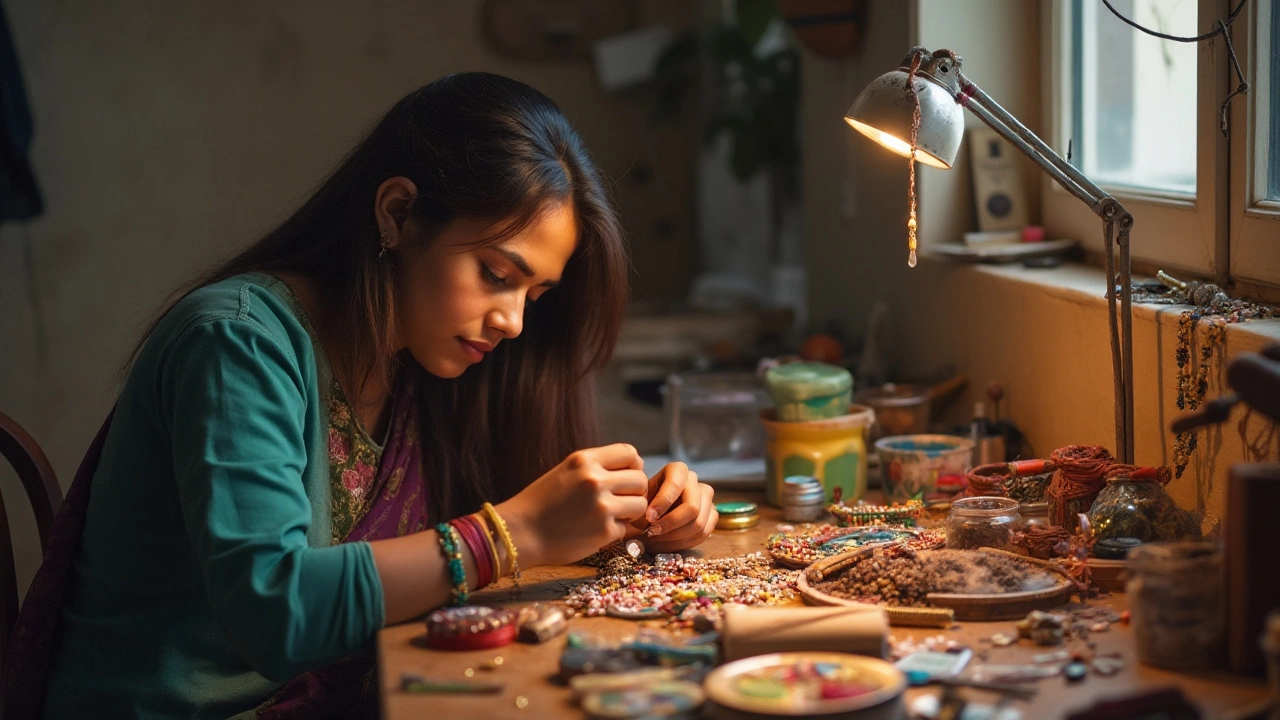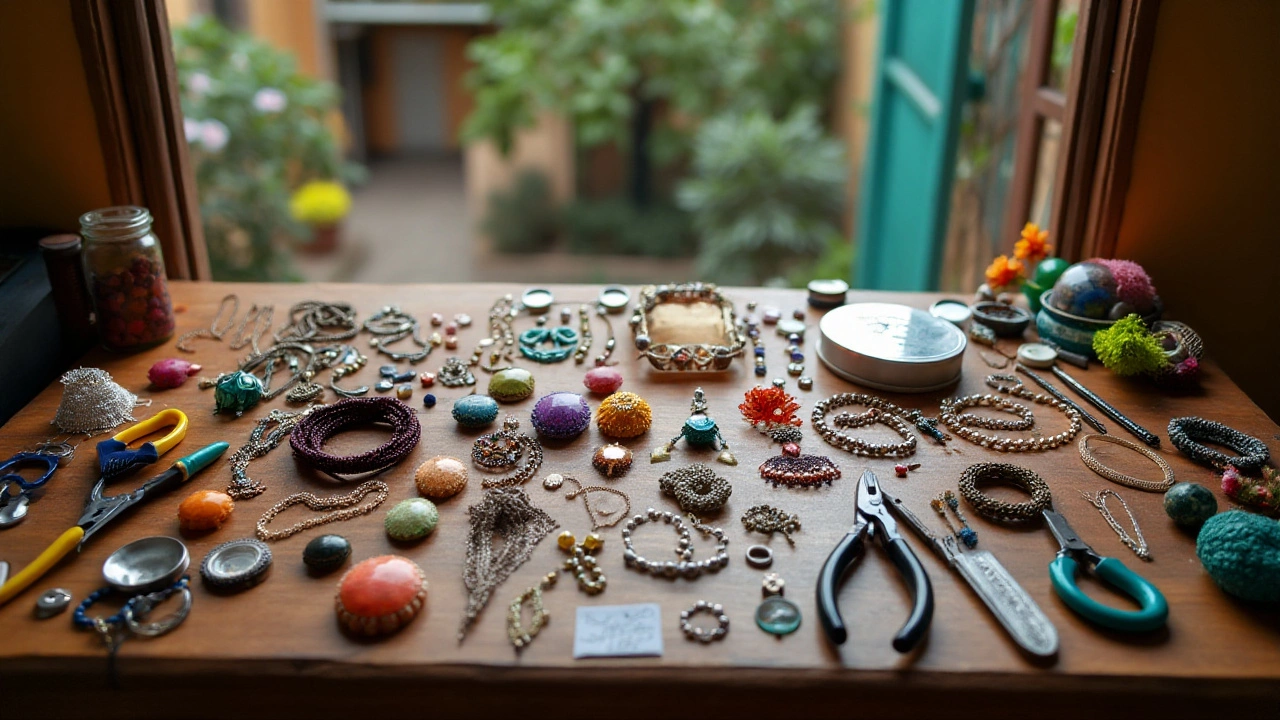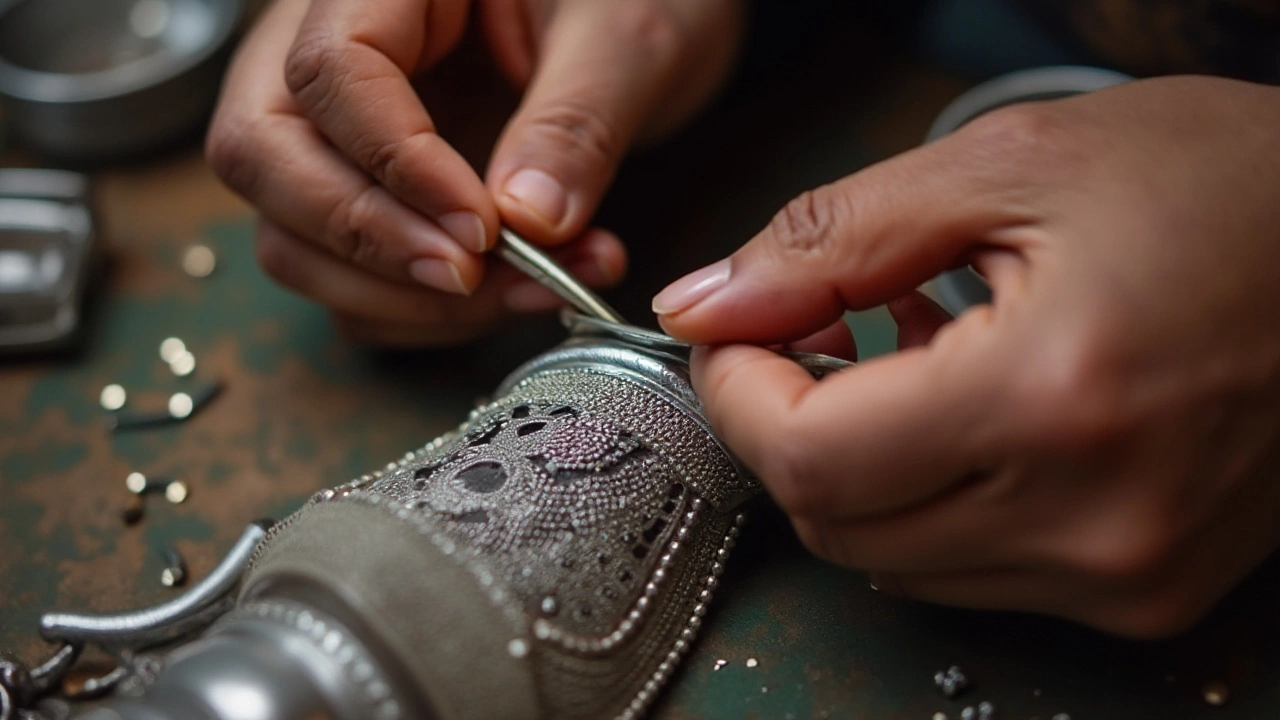
Jewelry making offers an extraordinary mix of creativity, skill, and personal expression. Whether you dream of crafting delicate earrings, bold necklaces, or sleek bracelets, having the right tools at your disposal is key.
As a beginner stepping into the world of jewelry making, the sheer variety of tools and materials available can seem daunting. But fear not! Equipping yourself with the basics not only simplifies the process but also enhances the joy that comes with crafting your own unique pieces.
The adventure begins with understanding which tools lay the foundation for every project. From wire cutters to bead assortments, these essentials will set you on the path to crafting success and transform your workspace into a haven of creativity.
- Basic Tools for Jewelry Making
- Materials You Can't Do Without
- Specialized Equipment for Advanced Projects
- Tips for Choosing the Right Jewelry Kit
Basic Tools for Jewelry Making
Embarking on the journey of crafting your own jewelry calls for an understanding of the essential tools that lay the groundwork for all your creative endeavors. Like any craft, having the right equipment is akin to a painter possessing a set of high-quality brushes. To start this fascinating journey, you need to assemble a toolkit that can cover a broad range of techniques and styles. It all begins with a pair of pliers, the cornerstone of any jewelry maker's toolkit. You might wonder why these mundane items hold such significance, but jewelry pliers are designed specifically to handle the delicate materials and intricate designs typical in jewelry making.
Among these, round-nose pliers are indispensable. They help form loops and curves, crucial for creating stylish earrings and custom wire shapes. Another essential is the chain-nose pliers, with flat jaws that taper to a point, making them perfect for opening and closing jump rings or gripping wire without marring the surface. Coupled with flat-nose pliers, these tools ensure you can tackle most basic jewelry tasks. Wire cutters, also known as side cutters, are another must-have. They are specially crafted to snip through metal wires cleanly for a professional finish. One cannot overlook the indispensable bead reamer, either. This tool is designed to enlarge and smooth out the insides of beads, allowing for perfect stringing without any snags.
A ruler or measuring tape is critical, guaranteeing that your designs are not only beautiful but also symmetrical and well-proportioned. Integrate these with a crafting mat to maintain an organized workspace, ensuring all those tiny beads and findings don't escape. When it comes to precision, a digital caliper can be quite a helpful gadget for measuring components with extraordinary accuracy, an often underrated, yet invaluable tool. Swapping out guesswork for precision sets the early learner apart from the seasoned expert. As noted by Jane Doe, a renowned jewelry designer,
"The secret to beautiful jewelry lies not just in creativity, but in the meticulous attention to detail that good tools permit."Her sentiment is echoed by many who value the synergy between human creativity and the utility of solid tools.
While you're finding your footing in this new world, some beginners prefer investing in comprehensive jewelry making kits available in the market. These kits neatly combine all essential tools and materials tailored for budding designers. They often include a range of beads, clasps, and wire assortments delivered in a compact, organized package. These kits act as practical, portable workstations, providing all you'll need to let your imagination take the reins. Eventually, as you grow accustomed to the basics, you may choose to expand your toolkit with more specialized equipment to cater to your evolving style and skills. By starting simple and solidifying your basics, you lay a strong foundation to potentially elevate your craft into a lifelong passion.

Materials You Can't Do Without
Delving into the world of jewelry making, there are certain materials that form the backbone of your creative projects. These essentials not only make crafting possible but also open up endless design possibilities. One of the most foundational materials you'll need is wire, available in various metals and gauges. For beginners, copper wire is often recommended due to its flexibility and ease of use. As you progress, you might experiment with sterling silver or gold-filled wires to add a touch of luxury to your pieces.
Beads are another staple in the jewelry maker's arsenal. They come in an astonishing array of shapes, sizes, and colors, offering endless inspiration. Consider starting with glass beads, which are both affordable and beautifully varied. As your skills grow, you can explore gemstone beads, adding an element of natural beauty and character to your creations. The choice of beads dramatically influences the style of your finished piece, from vintage elegance to modern chic.
The clasps and findings complete your jewelry pieces, transforming strands of wire and beads into wearable art. Lobster clasps, toggle closures, and jump rings are essential components, each offering different benefits and aesthetics. Good quality findings ensure your pieces are not only beautiful but durable. Consider investing in sterling silver or gold-plated options for a touch of elegance.
To organize and execute your ideas efficiently, you'll also need a selection of storage options for all your materials. Sorting beads by color and type in divided trays or boxes can save you time when you're in the middle of a project. Consider labeling your storage units to quickly find exactly what you're looking for, reducing frustration and keeping your creative flow uninterrupted.
Additional Must-Have Materials
Beyond the basics, there are materials that enhance flexibility and durability in design. Elastic thread is perfect for making stretchy bracelets and adaptively fitting designs. It’s important to use a high-quality elastic to avoid it snapping over time, especially if you're using heavier beads. Additionally, specialized beading thread, such as Nymo or Fireline, will come in handy for intricate bead-weaving projects, providing both strength and finesse.
A often-overlooked material is the humble adhesive. Jewelry glue or cement can stabilize knots, secure endings, or even attach pieces when soldering isn't feasible. Each jewelry maker finds their own preferred type of glue, but one thing remains universal: ensuring it dries clear and is non-toxic.
Let's not forget about the aura of presentation. When preparing your jewelry for gifting or sales, packaging materials become invaluable. Velvet pouches, branded boxes, and even simple organza bags can elevate the perceived value of your work. According to a study by Cadeau Packaging, compelling packaging can increase product appeal by up to 30%, making those initial impressions count.
"Good tools are essential to make beautiful jewelry, but exquisite materials are what capture the heart." — Caroline Stone, jewelry designer

Specialized Equipment for Advanced Projects
As you refine your skills in jewelry making, the time will come when you'll want to expand beyond the basic toolkit and start exploring more complex designs. This is where specialized equipment comes into play. These tools not only allow you to experiment with more intricate techniques, but they also imbue your jewelry pieces with a professional polish that sets them apart. One piece of equipment that often intrigues advanced jewelers is the torch. A torch allows you to perform tasks like annealing and soldering, which are essential for creating seamless metal connections in your designs. While opting for a torch can seem daunting, it opens up a world of design possibilities.
For metalsmiths interested in shaping their own components, a jeweler's saw is indispensable. This tool lets you cut precise shapes and patterns from metal sheets, enhancing the customizability of your creations. Pair this with a mandrel, typically a tapered, cylindrical tool, to shape and size rings or bracelets perfectly. Another worthwhile investment is the tumbler, which not only cleans but also polishes your pieces until they gleam like nothing else. As your skills grow, experimenting with advanced equipment becomes more appealing, leading to increased creativity and originality in your work.
If you’re inclined towards beadwork, consider acquiring a bead loom. This device lets you weave stunning patterns and can introduce a level of complexity to your projects that hand-stringing simply can't achieve. Moreover, with the use of digital calipers, you ensure precision in the dimensions of your creations, which is crucial when accuracy matters, especially for pieces with elaborate interlocking designs.
"The details are not the details. They make the design," notes Charles Eames, whose words resonate deeply in the jewelry crafting world.
Moreover, kiln users appreciate the ability to fire metal clay into solid silver or gold jewelry, transforming malleable clay into breathtaking metal art. You may also want to explore electroforming, a process that enables the bonding of copper to other materials, creating unique textural effects on your jewelry. For the boldest artisans, 3D printers have broadened the jewelry landscape, allowing for the creation of intricate bespoke designs that might otherwise be impossible to craft by hand. These tools represent a more significant investment but bring technical and artistic growth.
For a hands-on approach, a bench pin, and an anvil are necessary for hammering and shaping your pieces into desired forms, allowing for the application of textures and finishes that attract admirers. As you delve into more sophisticated DIY jewelry projects, such specialized tools enable you to realize your creative visions while pushing the boundaries of what you can achieve in jewelry design. Remember, as you upgrade your toolkit, simultaneous practice and education are crucial to mastering each new tool and technique.

Tips for Choosing the Right Jewelry Kit
Embarking on a journey into jewelry making is immensely rewarding, and crafting the right piece starts with picking the perfect jewelry kit. With an array of kits on the market tailored to various skill levels, from beginner to expert, choosing the right one can seem overwhelming. The key to choosing wisely is to first identify your skill level. If you're a beginner, opt for kits that focus on foundational skills using basic tools and materials. These kits often include instruction manuals or online tutorials to guide your first steps, ensuring you build confidence while you learn. For those with a bit more experience, advanced kits often provide specialized tools and materials, such as jig and looping pliers, which are crucial for refining techniques and experimenting with design complexity.
Another crucial aspect in deciding which kit is right for you involves determining the type of jewelry you wish to create. Are you interested in beadwork, metalworking, or perhaps wire wrapping? Each of these requires specific tools and materials, so understanding your interest will narrow down your choices significantly. A great way to evaluate kits is by reading comprehensive reviews and feedback from other jewelry makers. These insights often reveal the pros and cons of each kit, offering a sneak peek into your potential crafting experience. As the famous artist Pablo Picasso once said,
"The meaning of life is to find your gift. The purpose of life is to give it away."The right kit can indeed be a gift that helps you discover your artistic voice.
Many jewelry making enthusiasts also recommend starting with a budget in mind. Kits can range from very affordable to lavishly expensive depending on the brand, quality of materials, and quantity of tools included. Start by investigating what's within your budget, and remember that spending a little more initially on a higher quality kit can save costs in the long run, as tools often last longer and work more efficiently. For those who are data-oriented, an interesting survey conducted by Craft Industry Alliance in 2023 revealed that 65% of crafters found that investing in mid-range kits provided a superior balance of price and quality, reducing initial frustration when learning new techniques.



